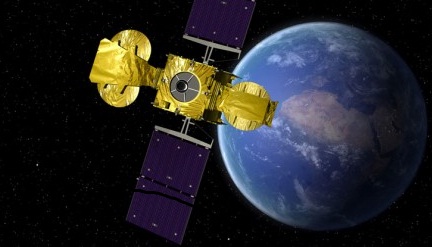Avanti Rural Broadband Satellite Beats Eutelsat

British-based Avanti will beat Eutelsat to the punch, launching a Ka-Band satellite for rural broadband this Friday
With governments failing to provide rural broadband, Avanti Communications claims to have leapt ahead in the race to launch satellites which can solve the problem.
The HYLAS1 satellite, which will launch this Friday 26 November, can cover most of Europe, providing up to 10Mbps broadband at a cost of around £25 a month, to areas which have not got good copper or fibre Internet connection.
Universal broadband needs help from space
The last UK government has promised the country will have a universal service offering 2Mbps broadband everywhere, but this has been delayed until 2015 because of funding difficulties.Various technologies have been proposed to solve the problem, including the WiBe 3G router
 This Friday night, Avanti Communications will launch HYLAS 1 in an Ariane space rocket from French Guyana. “The only parts of Europe we won’t cover are the Northen, Scandinavian countries, said David Williams, CEO of Avanti.
This Friday night, Avanti Communications will launch HYLAS 1 in an Ariane space rocket from French Guyana. “The only parts of Europe we won’t cover are the Northen, Scandinavian countries, said David Williams, CEO of Avanti.
The satellite will mostly offer consumer services, but will also support business broadband and some military services. It uses the Ka-band, at 28GHz, a high frequency signal which has good penetration.
Where older satellite services required a separate back very slow channel over a phone line, satellite broadband using the Ka-band can have a back channel provided through the satellite, using a low power transmitter on the user’s satellite dish, with about half the speed of the downlink.
Latency problems
The service will have some drawbacks compared with broadband delivered over fibre, admitted Williams, including a latency issue, in which signals will have a noticeable delay of around half a second.
“Latency is a fact of life derived from the laws of physics, and every form of technology has a latency factor,” said Williams. The 36,000 mile journey to the satellite adds about 400ms to the latency.
However, while a ping of 400 to 600ms might rule out online games like World of Warcraft, Williams says it is good enough for the real thing: “The military is using a Ka-band satellite to pilot and control aerial vehicles doing actual fighting,” he said.
Also, he pointed out that the number of nodes a signal passes through can also add to the latency, with mobile broadband particularly hard hit: “In a satellite system, it goes through three points, the dish, the satellite and the earth station.”
The HYLAS1 service will be resold by local ISPs in the different European countries, and the satellite will be followed in a year’s time by HYLAS2.
About 25 percent of the capacity of HYLAS1 has been sold, and Williams predicts that it will take about three years to fill up.
As HYLAS1 can serve around 300,000 homes, and there are about 30 million without decent broadband in Europe, there is plenty of scope in the market, which is just as well, since in December, another provider, Eutelsat, is planning to launch Ka-Sat, a satellite with European coverage.
“In this case, we embrace competition,” said Williams. “Twice the PR is a good thing, given that demand exceeds supply by such a wide margin.” The total amount of Ka-band provision so far is “woefully inadequate”, he said.
Although he believes satellite broadband can be done without government support, Williams would welcome it. “If the government is going to spend money on rural broadband, we should be part of the mix – and we already are in some projects in the UK and elsewhere. “